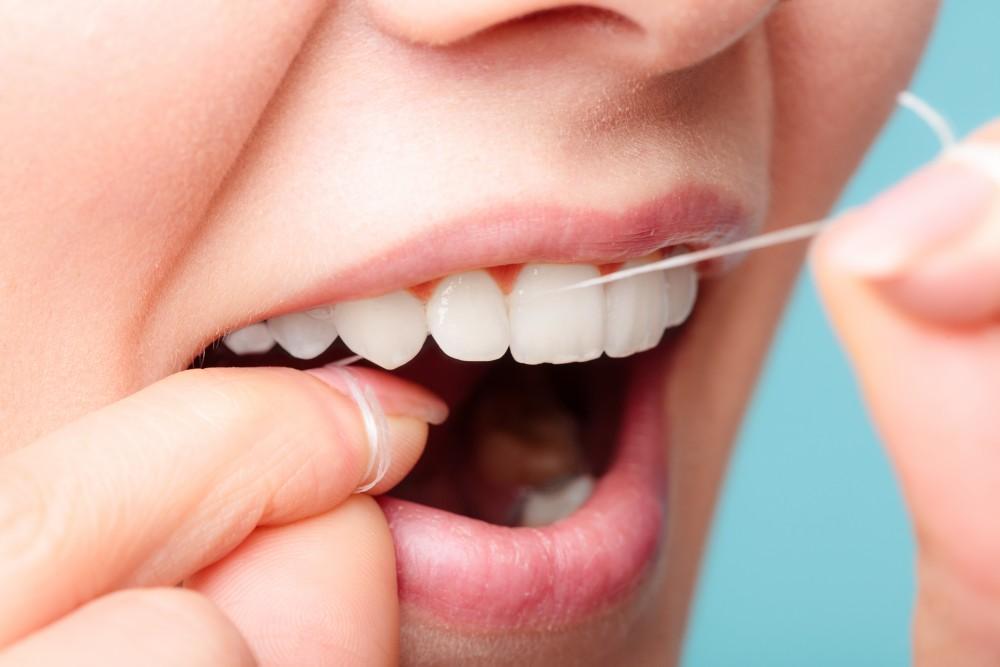Reversing Wear with Modern Dentistry
Tooth wear, a common yet often overlooked dental concern, affects countless individuals, impacting both oral health and confidence. In London, advancements in dental technology and techniques are transforming how professionals address this issue, offering solutions that not only restore teeth but also enhance aesthetics and functionality. This article explores the causes of tooth wear, modern approaches to reversing its effects, and the role of skilled practitioners, including the cosmetic dentist London professionals, in delivering cutting-edge care. By examining preventive strategies, restorative treatments, and emerging trends, it highlights how contemporary dentistry empowers patients to reclaim their smiles.
MaryleboneSmileClinic‘s renowned cosmetic dentist, Dr. Sahil Patel, stresses the need for prompt action to control tooth deterioration. Immediate treatment of tooth wear can improve function and aesthetics while preventing more harm. To replace damaged teeth with little invasion and provide long-lasting, natural results, our clinic uses innovative treatments like as composite bonding. Patients looking for effective ways to reverse wear will benefit from his approach, which highlights the combination of accuracy and creativity that characterises modern cosmetic dentistry.
Tooth Wear and Its Causes
Tooth wear results from the gradual loss of tooth structure, distinct from decay caused by bacterial activity. It manifests in three primary forms: erosion, attrition, and abrasion. Erosion occurs when acids, often from dietary sources like citrus fruits or carbonated drinks, dissolve enamel. Attrition involves tooth-on-tooth contact, such as grinding during sleep, leading to flattened or chipped surfaces. Abrasion arises from external forces, like aggressive brushing or abrasive toothpastes, wearing down enamel over time. In some cases, abfraction—small notches near the gumline caused by mechanical stress—also contributes.
The prevalence of tooth wear is significant, particularly in urban settings like London, where lifestyle factors play a role. Stress-related habits, such as bruxism (teeth grinding), are common among professionals navigating the city’s fast-paced environment. Dietary trends, including frequent consumption of acidic foods and beverages, exacerbate erosion. Data from the Oral Health Foundation indicates that over 30% of UK adults show signs of moderate tooth wear, with higher rates in older populations. However, younger individuals are increasingly affected due to modern diets and habits, making early detection critical.
The Impact of Tooth Wear on Oral Health and Aesthetics
Beyond physical damage, tooth wear affects oral health and self-esteem. Worn teeth become sensitive, as enamel loss exposes the underlying dentine, causing discomfort when consuming hot, cold, or sweet foods. Functionally, altered bite patterns can strain jaw muscles, leading to temporomandibular joint disorders. Aesthetically, shortened or uneven teeth can diminish a smile’s appeal, impacting confidence in social and professional settings. For many Londoners, where appearance often influences first impressions, addressing these concerns is a priority, driving demand for skilled cosmetic dentist London expertise.
The psychological toll is notable. Studies suggest that dissatisfaction with dental appearance correlates with reduced social engagement, particularly among younger adults. In a city as diverse and dynamic as London, where personal presentation matters, the desire for a restored smile fuels interest in cosmetic and restorative dentistry. Fortunately, advancements in materials and techniques offer effective solutions, tailored to individual needs and budgets.
Preventive Strategies to Halt Tooth Wear
Prevention is the cornerstone of managing tooth wear, focusing on lifestyle adjustments and professional guidance. Dietary modifications are a practical starting point. Reducing intake of acidic foods and drinks, such as wine, citrus, and fizzy beverages, minimises enamel erosion. When consuming acidic items, using a straw and rinsing the mouth with water afterward neutralises acids. Waiting at least 30 minutes before brushing prevents damage to softened enamel, a tip often shared by dental professionals.
Bruxism management is equally vital. Nightguards, custom-fitted by dentists, protect teeth from grinding during sleep. Stress reduction techniques, such as mindfulness or yoga, can also mitigate clenching habits. For abrasion, patients are advised to use soft-bristled toothbrushes and non-abrasive toothpastes, avoiding excessive force during brushing. Regular dental check-ups, recommended twice yearly, enable early detection of wear, allowing cosmetic dentist London specialists to intervene before significant damage occurs.
Fluoride plays a pivotal role in prevention. High-fluoride toothpastes, prescribed by dentists, strengthen enamel, making it more resistant to acid attacks. Professional fluoride treatments during dental visits further enhance protection. The British Dental Association highlights that consistent fluoride use can reduce enamel loss by up to 40%, underscoring its efficacy in combating wear.
Restorative Treatments for Reversing Tooth Wear
When prevention alone is insufficient, modern dentistry offers a range of restorative treatments to reverse tooth wear. Composite bonding, a minimally invasive technique, is highly effective for mild to moderate wear. A tooth-coloured resin is applied to worn surfaces, sculpted to restore shape, and hardened with a special light. This method, popular among cosmetic dentist London practices, delivers natural-looking results with minimal enamel removal, preserving tooth structure.
For more extensive wear, porcelain veneers provide a durable solution. These thin shells, custom-made to fit over teeth, correct shape, colour, and alignment issues. Veneers are particularly suited for anterior teeth, where aesthetics are paramount. Advances in ceramic materials ensure veneers mimic natural enamel’s translucency, blending seamlessly with surrounding teeth. While more costly than bonding, their longevity—often exceeding 15 years with proper care—makes them a worthwhile investment.
Dental crowns are employed for severe wear, where significant tooth structure is lost. Crowns encase the entire tooth, restoring function and appearance. Modern crowns, made from materials like zirconia or lithium disilicate, offer strength and aesthetics, suitable for both front and back teeth. In cases of multiple affected teeth, full mouth reconstruction may be recommended, combining crowns, veneers, and implants to rebuild the smile comprehensively.
Dental implants address tooth loss resulting from extreme wear or related complications. A titanium post, surgically placed in the jaw, supports a crown, replicating a natural tooth. With a success rate of 95%, as reported by the American Academy of Oral and Maxillofacial Surgeons, implants are a reliable option for London patients seeking permanent solutions. These treatments, often performed by a cosmetic dentist London expert, blend functionality with aesthetic enhancement, catering to the city’s discerning clientele.
Technological Innovations in Managing Tooth Wear
Technology is revolutionising how tooth wear is diagnosed and treated. Intra-oral scanners, increasingly common in London practices, create precise 3D models of teeth, enabling accurate monitoring of wear progression. Unlike traditional impressions, these digital tools enhance patient comfort and improve treatment planning. Artificial intelligence, integrated into diagnostic software, detects subtle signs of wear, such as enamel thinning or bite imbalances, facilitating early intervention.
3D printing is another game-changer, producing custom aligners, crowns, and veneers with unmatched precision. This technology reduces turnaround times and enhances fit, improving patient outcomes. Laser dentistry, used for procedures like gum contouring or cavity preparation, minimises discomfort and accelerates healing, making it ideal for wear-related treatments. These innovations, embraced by leading cosmetic dentist London clinics, reflect dentistry’s shift toward precision and patient-centric care.
The Role of Personalised Care in London’s Dental Scene
London’s dental landscape is distinguished by its emphasis on personalised care, driven by the city’s diverse population and high expectations. Initial consultations involve comprehensive assessments, often using digital imaging to visualise potential outcomes. This collaborative approach ensures patients are informed and confident in their treatment plans.
The rise of private dentistry, spurred by NHS backlogs post-pandemic, has elevated standards in cosmetic and restorative care. Private clinics offer flexible appointments and advanced technologies, appealing to busy professionals. Payment plans, such as those offered by The Dental Centre in Euston, make treatments accessible, spreading costs over months or years. This accessibility ensures that reversing tooth wear is within reach for a broad audience, from young adults to retirees.
Emerging Trends and Future Directions
The future of managing tooth wear is bright, with trends pointing toward minimally invasive and preventive approaches. Biomimetic dentistry, which mimics natural tooth structure, is gaining traction, using materials that replicate enamel’s properties. Regenerative techniques, such as enamel matrix derivatives, aim to stimulate enamel repair, though still in experimental stages. These advancements promise to reduce reliance on traditional restorations, preserving more natural tooth structure.
Social media influences patient expectations, with platforms like Instagram showcasing smile transformations. While this drives demand for cosmetic procedures, it also raises awareness of oral health, encouraging younger Londoners to seek preventive care. However, dental professionals caution against trends like at-home whitening kits, which can exacerbate wear if misused. Consulting a cosmetic dentist London specialist ensures safe, effective treatment aligned with long-term oral health.
Maintaining Results and Long-Term Oral Health
Post-treatment care is crucial for sustaining results. Patients are advised to adhere to strict oral hygiene routines, brushing twice daily with fluoride toothpaste and flossing to prevent plaque buildup. Regular hygiene appointments, including scaling and polishing, maintain restorations and prevent further wear. Avoiding habits like nail-biting or chewing hard objects protects repaired teeth from damage.
Dietary vigilance remains essential. Limiting acidic foods and maintaining hydration supports saliva production, which naturally buffers acids. For bruxism patients, ongoing use of nightguards and stress management are recommended. Biannual dental visits allow professionals to monitor restorations and address emerging issues promptly, ensuring the longevity of treatments.
Conclusion
Reversing tooth wear through modern dentistry combines science, technology, and artistry, offering Londoners solutions that enhance both function and aesthetics. From preventive strategies to advanced restorations, the field is evolving to meet diverse needs, driven by innovations like 3D printing and AI diagnostics. Skilled practitioners play a pivotal role in delivering personalised care, empowering patients to smile confidently. By embracing these advancements and maintaining diligent oral hygiene, individuals can protect their teeth for years to come, navigating the challenges of tooth wear with expert support.




